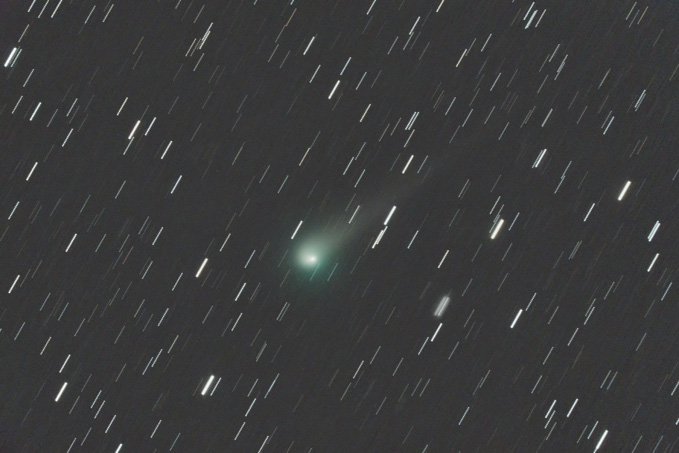
 |
| Date & Time: | Jun 9 2020, from 20:43 to 21:39 JST(+0900) |
| Composed 12 shots with 5 minutes exposed | |
| Optical: | VIXEN 20cm(7.9") VISAC with conversion lens (f=1278mm, F6.4) |
| with BaaderPlanetarium Moon&Skyglow filter | |
| Auto-guided with TAKAHASHI EM-200 Equatorial & Lacerta M-GEN | |
| Digital Camera: | Nikon D810A |
| Location: | Hitachi-oota city, Ibaraki pref. |
| Camera Settings: | Recording Format...14bit CCD-RAW, converted to 16bit TIFF(7360×4912) |
| Device Size...FX format(36×24mm) | |
| Sensitivity...ISO4000, White Balance...Daylight |
 |
 2019Y4 ATLAS on Mar 20, 2020 |
 2017T2 PanSTARRS on Apr 25, 2020 |
 |
 |
Copyright(c) 2020 by Naoyuki Kurita, All rights reserved. |
| To top page | To Comets&Meteors index |